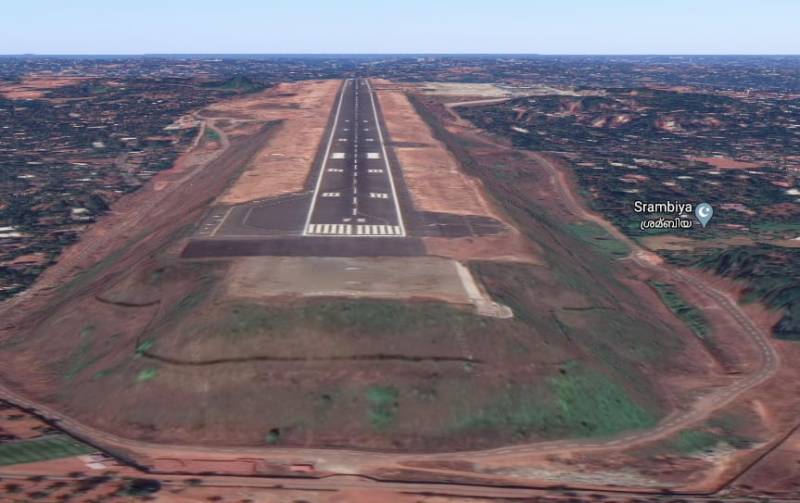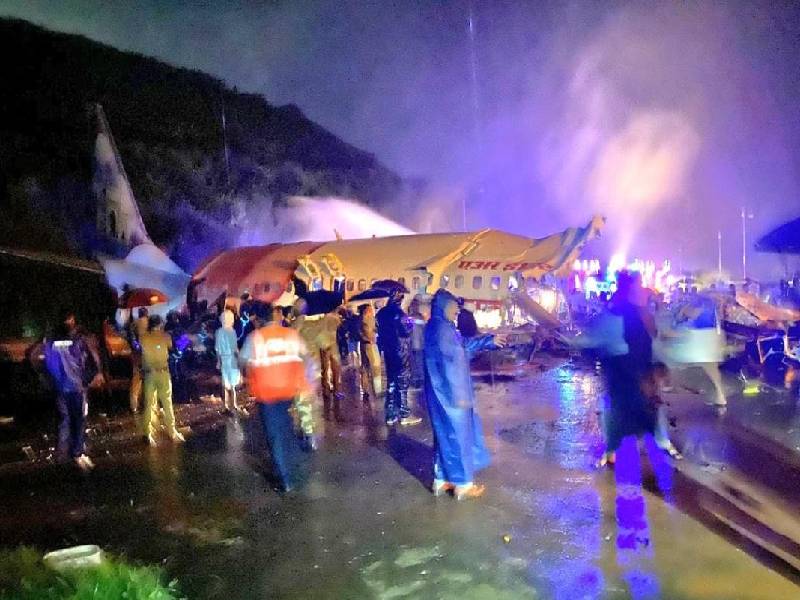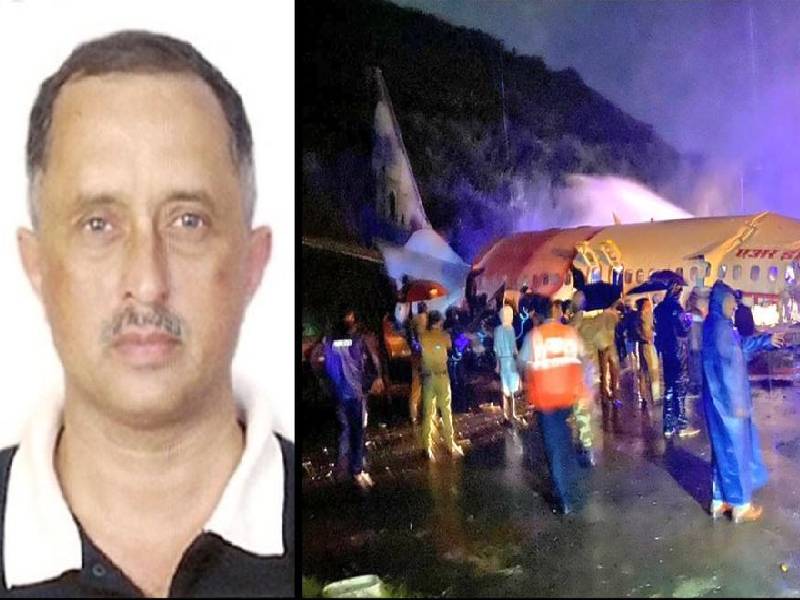AI Express crash: CISF played the role of a first responder in the golden hour
By CV Anand
By CV Anand, IG Airport Sector South West, CISF
It was just another day for the CISF deployed at Calicut airport for frisking passengers and discharging other security duties. Heavy rains are nothing new for them. They are used to see flights land and take off from their tabletop runway in such adverse conditions.
Tabletop runways are created in hilly areas where there is no flat land available, by cutting the hills and filling up the valleys with cut portions and then leveling and strengthening them for flight operations.
Kannur was the most recent runways created on a tabletop in 2018. All landings are more or less automated using ILS (instrument landing systems) CAT 1 to 3. During rain and bad weather, the touchdown point becomes very important and the slippery runway may lead to poor braking power and a longer distance becomes necessary to halt the aircraft as other factors come into play. Calicut runway is just short of three kilometers, which is the maximum one may get for a tabletop runway.
ASI Mangal Singh was at his duty post at 7.40 pm on August 7 at the emergency gate no 8 on the perimeter wall. ASI Ajeet Singh, as in-charge of the perimeter patrolling team, had reached gate no 8 and checked the beat book and signed it.
From their post, they could see the edge of the runway above at about 45 feet. Suddenly, they heard a loud sound and saw the Air India Boeing 737 Dubai - Calicut flight hurtling down the slope in front of them. They saw the cockpit separate and slide down at great speed and hit and crash into the perimeter wall. The separated body of the flight slid down a little distance away and stopped just ahead of the wall.

The ASIs alerted the airport control over the wireless and the barrack control where about 60-70 CISF members stay. Family members also were alerted. Within 10 minutes the first lot of 10 members had reached the accident site and so had the airports authority fire team.
The CISF CASO-chief airport security officer Kishore Kumar, a deputy commandant rank officer, who stays about 2 km away from the airport, was alerted and he reached the site in no time to lead the operations.
IG airport sector CV Anand gathered all information and kept the headquarters informed and mobilized other stakeholders including local police and airport staff and the ambulances. With an accident happening inside the operational area of the airport and roads available on both sides of the perimeter wall, the help reached the spot quickly. Some 20-25 locals staying near the airport also gathered. The CISF officers opened the gate no 8 and allowed them inside along with a JCB.
Air India Express flight en route from Dubai skids off runway while landing at Kozhikode: Reports say 180 passengers on board. The flight from Dubai skid off the runway while landing. More details awaited. #Kerala #KeralaFloods pic.twitter.com/wk60gYhEHe
— NewsMeter (@NewsMeter_In) August 7, 2020
[amp-tweet tweetid="https://twitter.com/NewsMeter_In/status/1291760424640110592"]
Despite heavy rain and darkness, they started the evacuation process. They noticed that the passengers seated in the three front rows of the flight and the last three rows of the flight were stuck in their seats and between the seats. There were 10 infants whose cries filled the air. The passengers in the center of the aircraft were not much impacted. Some had unbelted themselves and were walking around. Luckily, the interior lights of the aircraft were still on and they helped immensely in the rescue. The CISF team, using their own flash lamps and lights, gathered the passengers, whoever was getting available, and started transporting them in their own vehicles to various hospitals.
When the ambulances arrived and the pace of evacuation picked up. The focus shifted to the passengers who were stuck. One by one they too were extricated. At some places, the fire teams had to cut the metal to free the passengers. Finally about 125-130 CISF men along with airport authority employees, local police, and local people managed to evacuate all except four passengers. There were 184 passengers and 5 flight attendants on board the ill-fated flight. The NDRF team reached the spot at about 10 pm and extricated 4 passengers of whom one woman died in the hospital.
Air india Express AXB1344, B737 Dubai to Calicut, person on board 191, visibility 2000 meter, heavy rain, after landing Runway 10, continue running to end of runway and fall down in the valley and broke down in two pieces: DGCA #KeralaFloods pic.twitter.com/SuvgAVlokN
— NewsMeter (@NewsMeter_In) August 7, 2020
[amp-tweet tweetid="https://twitter.com/NewsMeter_In/status/1291762598665363456"]
On the other side, the cockpit was stuck in the perimeter wall. The impact was so huge that both pilots were stuck inside. After a lot of effort from the CISF and fire team, they were extricated. The officers said that the main pilot was almost dead by the time they could extricate him. Copilot was very badly injured and breathed his last while on way to the hospital.

This immediate action of the CISF as the first responder could keep the death toll down to 18. Luckily, the aircraft did not catch fire, perhaps due to the emptying of the fuel by the pilots or due to the rain. Had flight caught fire, the casualties would have risen dramatically and made rescue operations very difficult, like that happened in Mangalore in May 2010. The aircraft had caught fire while falling into the valley below and there were 158 casualties. Only 8 passengers had survived.
CASO Kishore, ASIs Mangal Singh, and Ajeet Singh were immediately appreciated and granted the DG's Disc by DG CISF Rajesh Ranjan. The role of CISF in reacting quickly and efficiently in the golden hour was appreciated by one and all.